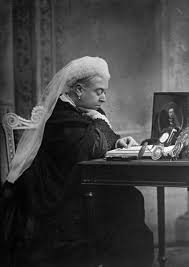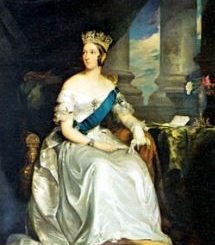Queen Victoria’s Death: How, When, & Where Queen Victoria Died

Queen Victoria’s Death: How, When, & Where Queen Victoria Died
Coming in behind her great-great-granddaughter Queen Elizabeth II, Queen Victoria’s 63 years on the British throne puts her in second position on the list of longest-reigning British monarchs of all time. The firm and strong-willed monarch’s reign began on June 20, 1837. After close to six decades of steering the affairs of the United Kingdom and its colonies, the Queen sadly passed away on January 22, 1901. Her death meant the end of a very brilliant era popularly called the Victorian era. It was an era characterized by immense socio-political and economic achievements both in the U.K. and abroad. In the article below, detailed attention will be paid to Queen Victoria’s Death: How, When, & Where Queen Victoria Died.
Victoria’s Last Few Years – the Year 1900
The queen’s “annus horribillis”, as it has been popularly termed, began with the news of her son’s death. Prior to that, she had to contend with the vastly criticized Boer War (1899 –1902) that was ranging on in South Africa. Her country was in a bitter war with Afrikaner republics.
The year 1900 was an absolute disastrous year for Queen Victoria. The events that transpired were perhaps what eventually triggered the queen’s sharp decline in health and eventual death. With each passing day, Victoria got more and more depressed and confused.
Also in 1900, the queen’s eldest son and heir to the throne, the Prince of Wales (Prince Edward, later King Edward VII), dangerously had a close call with death.On April 4, 1900, while on his way to Belgium, Prince Edward was shot at in an apparent assassination attempt. Investigations revealed that the perpetrator, a 15-year-old male (Jean-Baptiste Sipido), was a very radical protester against the Boer War.
As if Edward’s assassination attempt wasn’t that bad, the queen’s eldest child, the Princess Royal (Princess Victoria) – Empress of Germany – had been diagnosed with cancer in the breast.
The Death of Affie and Other Close Relatives
Tragedy was not yet done tormenting the frail and old queen. This time around it struck one of her children. The death of the queen’s son – Prince Alfred, the Duke of Edinburgh- was certainly the biggest shocker of the year 1900. Affie, as she often called him, was certainly her favorite child. The prince had for decades battled with excessive drinking and smoking. As a result, he was diagnosed with throat cancer. He passed away at the age of 56 on July 30, 1900.

Queen Victoria mourning the death of her son, Prince Alfred in 1900
Queen Victoria’s rheumatism and cataracts weren’t getting better as the months rolled by. She was hanging onto a very thin thread of life. Her appetite was virtually gone and she had lost about half of her weight. Thin and weak, the queen had no option than to use a wheelchair. In spite of all these, her children and close members of the royal family largely ignored the possibility of her death. Also, the public was largely kept in the dark. Across the country, it was simply business as usual.

Comments made by Queen Victoria during her final years
Also in the year 1900, Queen Victoria’s grandson – Prince Christian Victor (son of Princess Helena) – died after battling a severe case of fever while on a military campaign in South Africa. He died aged 33 on October 29, 1900.
Lady Churchill – the queen’s very close confidant and friend- also lost her life. The sad thing was that it happened in one of the queen’s residence.
The Year 1901

Queen Victoria’s comments after New Year celebrations in 1901
As it was tradition for the queen, the queen always celebrated the Christmas holidays at her Osborne House on the Isle of Wight. She had been doing this ever since her husband Prince Albert died in 1861.
By this time, the queen was frequently moving in and out of consciousness. Her memory was fast failing. Keeping her company and tending to her every need was her personal physician Sir James Reid. The highly renowned doctor had gracefully served her majesty for over 20 years.
January 17, 1901
Queen Victoria’s last few days saw her get rapidly ill. None of her children expected her to die. The queen had ruled for such a long period of time that some royal family members could not even begin to fathom the possibility of her death.
Amidst all the delirium and confusion, both the government and a large section of the royal family swiftly discarded her majesty’s impending demise. Victoria’s children , in particular, were grossly ill-prepared even though Sir James categorically asked them to at least start making provisions for the inevitable – the queen’s end was drawing close.
When news of her illness got to the queen’s grandson Wilhelm II (the German emperor and king of Prussia), the kaiser quickly put everything on hold and went straight to England. Accompanying him was the queen’s seventh child, Prince Arthur the Duke of Connaught.
The royal family could no longer keep the lid on it; they had to make an announcement of the queen’s ill health. From 17 January up until her death, Victoria suffered several strokes. Her speech was by this time impaired and slurred. The whole royal family made their way to the Isle of Wight.
With such large gathering of royal family members and government officials at the queen’s residency, the whole country was thrown into an uneasy feeling. Journalist gathered around her residency trying to sniff out news of her health.
Several bishops and clergymen were by Victoria’s side, offering prayers and singing hymns. As Sir James held her hands, the Kaiser Wilhelm was completely stunned as he pondered the inevitability of his grandmother’s demise. She was completely blind by this time and could not tell which people were beside her.
Tuesday, January 22, 1901
Once it became apparently clear that the queen was dying, the royal family tasked Superintendent Fraser, the chief of security at the queen’s residence, to beef up security. Fraser also halted communication in and out of the place.
At 6:30 p.m., Queen Victoria was pronounced dead, she was 81. Victoria’s final moments were passed in the company of her loved ones and her children and grand-children.

Extract of the words that announced Queen Victoria’s Death in 1901
Before the public was informed about her passing, the residence officials made sure that the news did not get out before Prince Edward went through the necessary process of ascension.
The Public’s Reaction to Her Death
The moment the notice was made, journalists quickly picked the story. People ran amok shouting “Queen dead”. The news spread like wild fire. In a matter of less than an hour, newspapers such as the Illustrated London News and London Evening News printed out a black-bordered special edition to cover the breaking news.

A newspaper headline announcing Queen Victoria’s death in 1901
Almost all commercial activities in the country came ground to a halt. Theater plays were put on hold. Businesses closed and made preparations to buy black mourning clothes. Several lines of queues developed at shops that sold those clothes. Also, several church bells across the nation rang and people gathered to sing solemn songs and pray for the queen.
Disagreements over Queen Victoria’s Funeral Arrangement
There was a thick blanket of sorrow all over the queen’s residence. Amidst all of that, the royal family seemed to struggle to find someone who could instruct them on how to carry out the funeral rites of the queen. To be quite honest, no one knew what to do. Considering how long the queen had reigned, those who knew about funeral arrangements for a dead monarch were all dead. It was an unprecedented situation in the country.
Victoria did, however, leave specific instructions for how she wanted her funeral to be like. The deceased monarch wanted a military state funeral. She did not want her body to be embalmed; no lying-in-state; and she did not want a mourning black outfit. Queen Victoria opted for a white funeral with purple and white background. She also wanted white ponies to pull the gun carriage.
The incoming monarch, king Edward VII, refused handling affairs until his mother was buried. This created a power vacuum. Those who were supposed to manage the ceremony were either ignorant of the process or they squabbled and fought amongst themselves. For example, the Earl Marshal and Lord Chamberlain could not come to an agreement on who was supposed to handle the funeral ceremony.
The Kaiser of Germany Wilhelm, the queen’s first grandson, wanted to use a death mask. But the other royal members vehemently opposed this idea. The Kaiser also had a bitter argument with the Bishop of Winchester.
Queen Victoria’s Coffin
While royal officials and members debated over what funeral arrangements, Sir James Reid and Mrs Tuck – the queen’s dresser—prepared the queen. Because the queen did not want any embalming done on her, they used charcoal to mitigate the smell and moisture from the body. Her hair was cut off and she was dressed in white silk.
The Duke of Connaught (her son), William (the Kaiser – grandson) and Edward VII (oldest son) lifted her body into the coffin. When all the preparation was done, Sir James and Mrs. Tusk carried out Queen Victoria’s secret instructions for her coffin. With the exclusion of those two, no one else knew what those instructions were.
Many of the things that were placed in the coffin belonged to her husband, Prince Albert. These things were Albert’s dressing gown, pictures, and a plaster of Albert’s hand.
The two trusted duo of the queen also placed a John Brown’s mother’s ring on the queen’s finger. John Brown was the closest person to the queen since her husband’s death in 1861. They were very fond of each other. Some have even speculated that the queen had a romantic relationship with Brown. Hence, it was not surprising that Victoria instructed Sir James to place Brown’s photograph, his lock of hair, and his pocket handkerchief into her coffin.
After the coffin was shut closed, it was then covered with Britain’s flag – the Union Jack.
Queen Victoria’s Funeral Procession

Queen Victoria’s funeral procession in London on February 2, 1901
The funeral organizers moved the queen’s coffin from her residence at Osborne House to London for the final funeral rites. The coffin boarded a ship called Alberta. It then made its way through Portsmouth, before finally getting to London on February 2.
On the day of her funeral, and as per her instructions, the coffin was carried in a gun carriage. The carriage was pulled by eight white ponies. However, there was a problem with the horses – their traces broke. The unruly behavior of the horses was attributed to the freezing temperature.
Due to the inability to reattach the horses back to their harness, 138 guards from the naval guard of honor stepped in to pull the carriage all the way to St George’s Chapel, Windsor Castle.
Leading the funeral procession and other members of the royal family was the new king, King Edward VII. The streets must have been packed with at least several thousands of silent onlookers.
Final Resting Place of Queen Victoria

Inscription on Frogmore Mausoleum
After spending about 48 hours at St George’s Chapel, Queen Victoria’s coffin made its way to the Frogmore Mausoleum. This final resting place of Queen Victoria is the same place that Prince Albert was buried.
All in all, the funeral cost the nation about £35,500. Its present value is around £4.5 million.




























1 Response
[…] and passed away on August 5, 1901. She was 60 years old. Her death came seven months after her mother’s death in […]